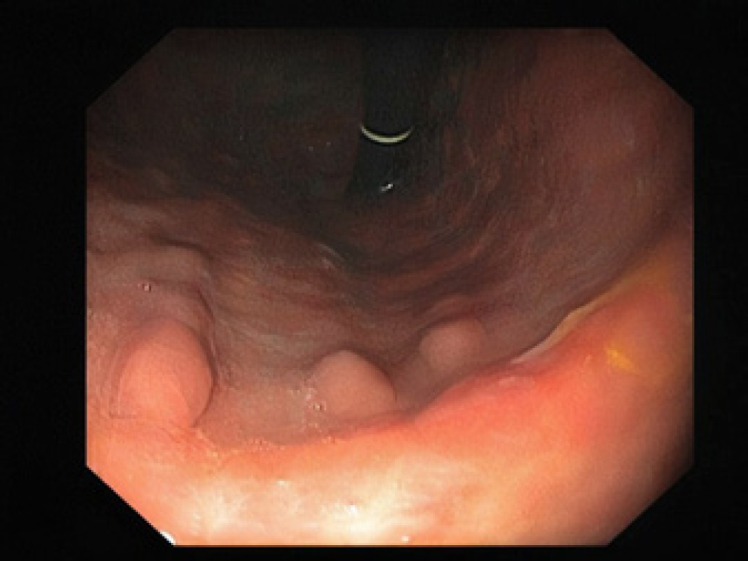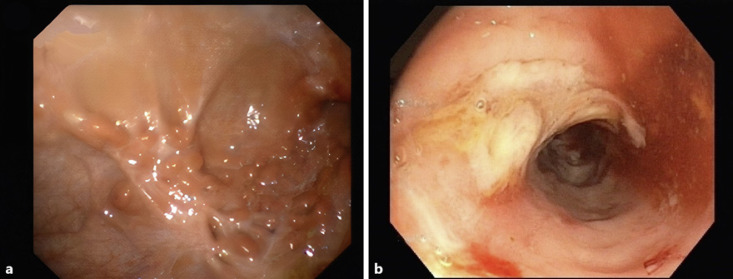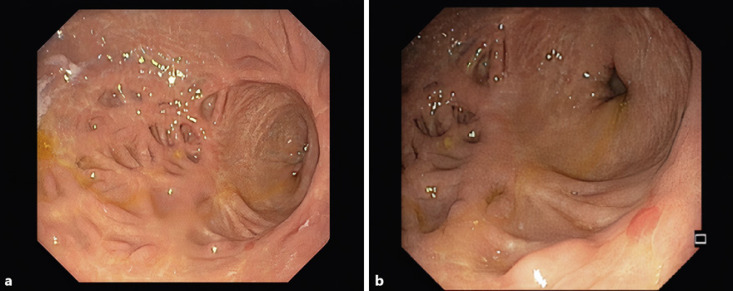An Unusual Endoscopic Finding of Gastric Crohn's Disease.
IF 1
Q4 GASTROENTEROLOGY & HEPATOLOGY
引用次数: 1
Abstract
A 37-year-old woman with a past medical history of obesity (body mass index 50 kg/m2) and Crohn’s disease (Montreal classification – A2 L2+L4 B1) was referred to our institution for bariatric surgery after several unsuccessful weight loss attempts. The diagnosis of Crohn’s disease was established at age 19 (Fig. 1) and at that time she started therapy with azathioprine and a prednisolone taper. Due to poor control of the disease, the patient underwent several long courses of corticosteroid therapy. At this point, she began to gradually increase her weight. Over the past 4 years, the patient has been on infliximab at 5 mg/kg every 8 weeks, with evidence of clinical and endoscopic remission. A preoperative esophagogastroduodenoscopy was requested in order to assess the upper gastrointestinal tract for any abnormal findings as well as the presence of Helicobacter pylori (HP) infection. The endoscopy revealed retracted scar tissue in the gastric body (Fig. 2a) and antrum (Fig. 2b), with lesions with a bamboo-joint-like appearance and several pseudopolyps (Fig. 3). The esophagus and duodenum appeared normal. Histopathologic examination of biopsies from the stomach demonstrated mild foveolar hyperplasia and HP-negative chronic gastritis, with no signs of activity. No epithelioid granulomas, glandular atrophy, dysplasia, or signs of malignancy were identified. The patient underwent a sleeve gastrectomy without complications. The surgical specimen did not reveal any specific sign for inactive Crohn’s disease. Indeed, histopathological evaluation of the surgical specimen showed chronic gastritis and hyperplasia of the foveolar epithelium cells, without active inflammation, granulomas, dysplasia, or signs of malignancy. Five months after the surgery, she has already lost 36 kg and Crohn’s disease remains in remission. Crohn’s disease is defined by chronic inflammation that may involve any site of the gastrointestinal tract.



胃克罗恩病的一个不寻常的内镜发现。
本文章由计算机程序翻译,如有差异,请以英文原文为准。
求助全文
约1分钟内获得全文
求助全文
来源期刊

GE Portuguese Journal of Gastroenterology
GASTROENTEROLOGY & HEPATOLOGY-
CiteScore
1.60
自引率
11.10%
发文量
62
审稿时长
21 weeks
期刊介绍:
The ''GE Portuguese Journal of Gastroenterology'' (formerly Jornal Português de Gastrenterologia), founded in 1994, is the official publication of Sociedade Portuguesa de Gastrenterologia (Portuguese Society of Gastroenterology), Sociedade Portuguesa de Endoscopia Digestiva (Portuguese Society of Digestive Endoscopy) and Associação Portuguesa para o Estudo do Fígado (Portuguese Association for the Study of the Liver). The journal publishes clinical and basic research articles on Gastroenterology, Digestive Endoscopy, Hepatology and related topics. Review articles, clinical case studies, images, letters to the editor and other articles such as recommendations or papers on gastroenterology clinical practice are also considered. Only articles written in English are accepted.
 求助内容:
求助内容: 应助结果提醒方式:
应助结果提醒方式:


